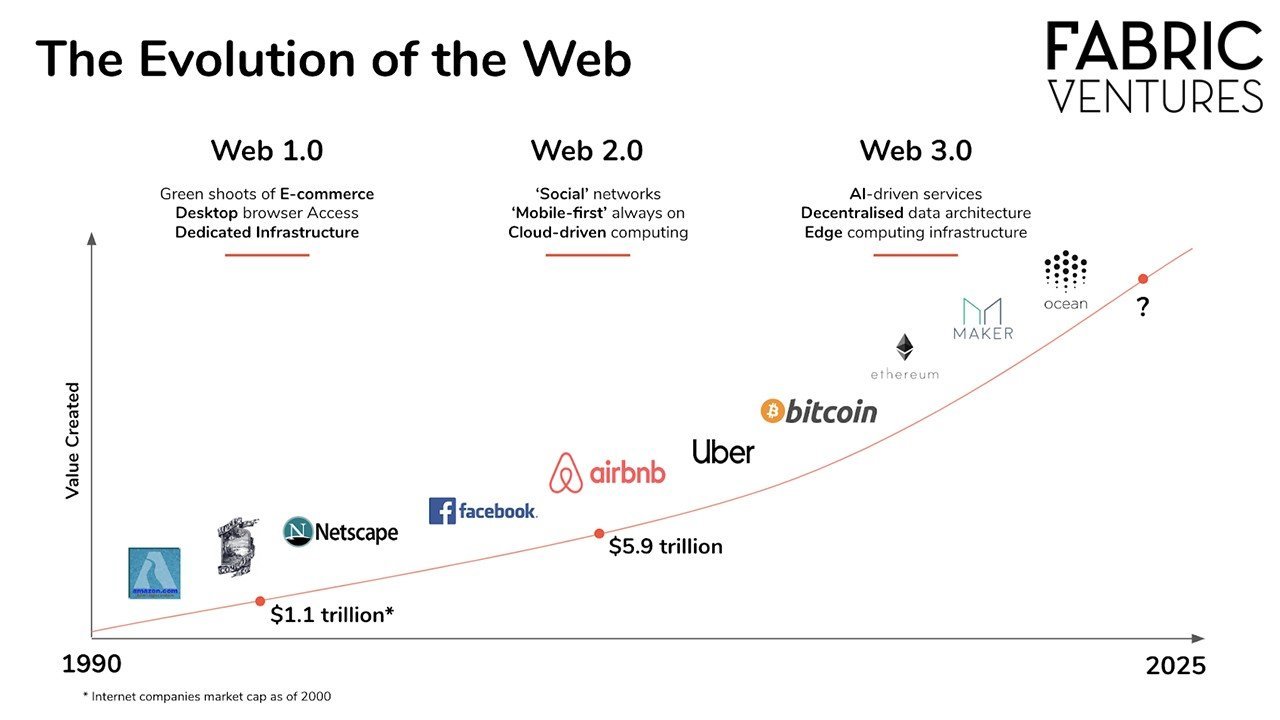What do the NFL, Adidas, and Real Estate have in common?
Source: Fabric Ventures
There's a point in every major shift in technology where people start to move from mocking the trend to wondering how they didn't jump on it sooner. It happened with the original Internet, then with social media, and it seems we're right at that turning point with "Web 3."
Even in the past few weeks, it seems to have gone from a term thrown around only in tech-circles, to appearing in headlines like:
As they say: History may not repeat itself, but it sure does seem to rhyme. Back in the late 2000s we saw a lot of the same type of news as businesses were dabbling in e-commerce, switching their catalogue distribution to digital, and making headlines by shifting their ad budgets to the online world.
Back then, one of the greatest barriers that businesses faced in shifting to digital was a lack of resources to help them build a basic understanding of what was going on. After all, if you weren't comfortable using the Internet, where could you look for information about the Internet? David Letterman tried asking Bill Gates live on air, with mixed results.
Today, it seems we have the opposite problem: there's too much information out there. The tidal waves of headlines and resources can ironically leave us just as starved for reputable information. In order to get us all to a place where we can be aware of the trend and start to think about how we may react, we've put together a few definitions and high-quality resources:
EVERYONE'S TALKING ABOUT WEB 3. WHAT IS WEB 1?
Web 1 was the first phase of the Internet. It consisted of static pages with very little functionality. Without a high level of knowledge and hardware, most Internet users were consumers only, who didn't have the ability to build, create, or otherwise contribute to the online world.
WHAT'S THE DIFFERENCE BETWEEN WEB 1 AND WEB 2?
Faster Internet speeds, JavaScript, and much cheaper web hosting sparked the emergence of Web 2.0 which is characterized by social media, user-generated content, and interactive websites.
Web 2 made users a part of the creation process and allowed people to create, share, and engage with each other. It made e-commerce possible for businesses of all sizes and brought about new opportunities for advertising, content marketing, and customer service.
OK, NOW WHAT'S THIS WEB 3 THING?
Instead of all of our apps and sites being centralized on servers controlled by a single company, that information is distributed across a public blockchain that can't be taken down, restricted, or modified by any central authority.
On top of that decentralized Internet, there are applications that are able to understand what we need, interpret our requests, and make decisions on our behalf.
It's still early days, but already Web 3 technology has made it possible to create a currency that can be shared instantly across the world (Bitcoin, Ethereum, etc.) and we now have indisputable records of ownership that we can buy and sell (NFTs), and people are able to create a new type of company with distributed ownership where everyone gets a vote in the decision-making process (DAOs).
Like all great technology, it will build from those foundational building blocks to become so easy to use that we barely even notice them.
For the end-user, Web 3 still starts with a good old-fashioned website or app, but the power is in what the technology makes possible, and our imaginations have only just gotten started. Think of the creativity that will be sparked when we can create rock-solid contracts with people on the other side of the world with zero lawyers involved. And the efficiency created when we can move any amount of money from Vancouver to Buenos Aires in seconds with nearly $0 in fees.
The news is filled with headlines about artists selling jpegs for millions of dollars, people getting rich from memes, and robots that run their own influencer accounts on Instagram. Those things are happening, but the really interesting changes are occurring in places where expensive barriers like regulators, lawyers, and money exchanges are no longer required, leaving people free to create, transact, and collaborate with each other.
Want to dive further down the rabbit hole?
Here are some great starting points:
Written by Conner Galway, Junction Consulting

